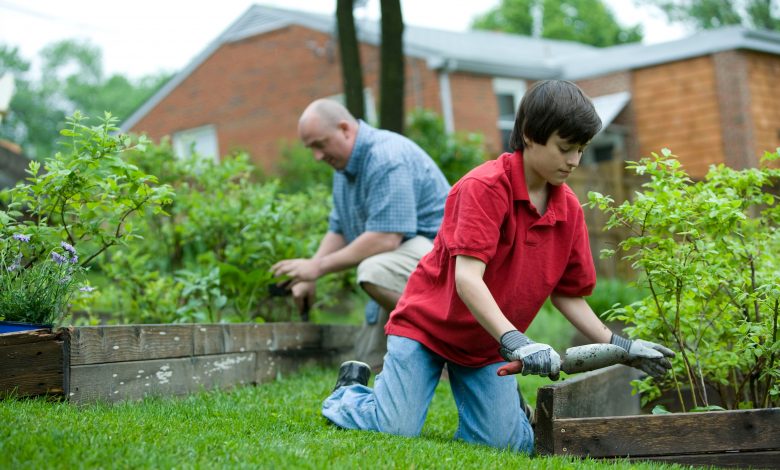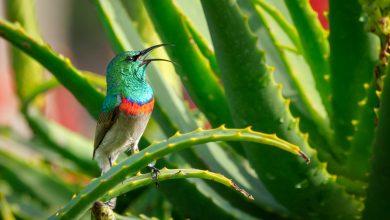What are the Best Garden Types and Plants for Beginners?

Planting a garden in your yard can be one of the most rewarding yet overwhelming experiences. Plants bring interest and aesthetic appeal to any landscape. However, if you lack experience or don’t have a green thumb, it may be tough to know where to begin. The good news is that gardening is very forgiving. Plants may die when mistakes are made, but they can always be replaced. Plants may be too big or too small for space, but they can be transplanted and moved. Gardening is about continually learning and reaping the rewards of hard work. This article is an introduction to garden themes and types of plants for someone just beginning their journey in gardening.
No matter how big the space you have to work with or what kind of garden you are looking for, we have recommendations that are sure to suit your need.
Types of Gardens
It is always best to have a plan when starting a new garden. Firstly, consider the size of the space you are working with. This gives you an indication of how many plants you need to fill the space adequately. In addition, make a note of the sun exposure for the space. Do you have full sun, part-sun, or all shade? This affects the types of plants that can thrive in the area. Also, think about how big the plant grows when it reaches maturity. Plants need space both vertically and horizontally to accommodate their size.
Planning your garden should also take your preferences into consideration. Perhaps you have a few plants that you absolutely love, or maybe it’s more about the color for you. Perhaps you adore purple flowers, pink flowers, or even blue flowers. Find plants that fit your liking and include them in your design. Be aware that not all plants can survive in all climates. Purchasing plants from reputable nurseries can help ensure the plants you choose to have the ability to survive in your environment.
A great place way to plan a garden is by deciding on a theme. Having an idea helps to keep your garden cohesive and purposeful. An idea also provides guidance for plant selection and placement.
Here are a few themes that may interest a beginner gardener or someone who wants to start venturing into planting fruits, vegetables, or flowers.

All Season Garden
It’s easy to think of gardening as only a spring and summer activity if you live in a northern climate. But a good garden actually creates visual interest in all four seasons. Interest in spring and summer are usually present through flowers. For example, forsythia shrubs have wonderful yellow flowers early in the spring. Tulips and daffodils are also excellent plants for spring flowers.
When it comes to summer, the number of flowering plants expands significantly. This is usually when a garden is considered to be in full bloom. Hydrangeas, roses, hostas, echinaceas, summer phlox, and weigelas are just a few examples of summer flowering shrubs and perennials.
Fall becomes a little more complicated. While there are lots of plants with fall flowers – think sedums, rudbeckias, and asters, fall also brings interest through changes in leaf color. Burning bushes are one of the most magnificent shrubs for fall color. Their leaves go from green to brilliant red, adding great attention to any garden.
Finally, the hardest season of all – winter. Winter garden interest can be created in a few ways. Many kinds of grass, such as Karl Forresters, can be left up over the winter so that your garden still has something to look at. Evergreens are also great to look at when covered in snow. Consider putting Christmas lights on your evergreens for a great evening effect. There is nothing quite as festive as the sight of white lights softly glowing under a blanket of snow.
No matter what season, there is always something that can be included in a garden to bring aesthetic appeal to your landscape. Plan ahead and think year-round. It is also important that, if you are looking to have a garden for all seasons, you may need to invest in the proper equipment and materials to ensure that your seeds have what they need to thrive. Whether it means that, for the winter months, you have to insulate or apply a special film in the garden to keep the plants warm, do your research and prepare to build a versatile garden for all seasons.
Butterfly Garden
Most people love to see butterflies floating around their yard. A lot of the time, butterflies show up by chance. But it is actually quite easy to make a few additions to a garden to make it a great host for these friendly insects. Include plants such as bergamot, cosmos, and Black-Eyed Susans; they are butterfly favorites. They all produce a sweet nectar that butterflies find hard to resist. Milkweed, though considered a weed in many places, is specifically useful for attracting monarchs.
Butterflies also require a habitat where they can easily survive. For this, they need sunny areas with limited wind exposure. Butterflies can easily be swept away in high winds, so they naturally avoid those areas. Consider adding a few rocks to the garden. Butterflies need a resting place; sand rocks are both practical and aesthetically pleasing in the garden. Butterfly gardens are a great choice for mild to warm climates.
Veggie Garden
We live in a world where every type of fruit or vegetable is available at our fingertips. Interestingly, a movement amongst this convenience is a desire to go back to basics and grow one’s own food. Planting a vegetable garden is a great learning experience for both children and adults, where the rewards of hard work are easily recognizable.
Here are a few tips for a successful experience:
Start small.
This means choose just a couple of plants until you get the hang of it. Do not overwhelm yourself by trying to grow everything you plan to eat this summer. Tomatoes are beginner-friendly and can even be grown in a container. Bush beans are also a great place to start. Plant one or two of each plant and see how you do.
Try planting an herb garden.
Herbs can be a great learning tool. They take very little maintenance because you are interested in the leaves, not the flowers. This means they need minimal sunlight, so they can grow just about anywhere. You can even grow them in small pots in the kitchen to have a year-round indoor garden. A fresh herb garden is great if you enjoy cooking Italian food or working with fresh herbs.
Most vegetables require full sun.
This means they need at least six hours of direct sunlight or, even more ideally, eight hours. Sun and heat allow the veggies to develop correctly, and it gives them their distinct flavors.
Veggie gardens need lots of water.
Veggies are made up primarily of water and therefore need lots of water to grow. Plant your vegetables close to your water source and make sure the hose reaches all plants. To grow hardy plants, water deeply once or twice a week, depending on your climate. Watering less often but for longer creates stronger roots than watering for short periods more frequently.
Don’t be afraid to make mistakes.
Growing a veggie garden is not always easy, but the results are almost always satisfying, not to mention, you can cut your grocery bill in half when done correctly. If you are looking to eat organically, then a vegetable garden is one way of obtaining this.
Rain Garden
Rain gardens are a newer trend in the landscaping industry. The point of these gardens is to act as a catch basin for excessive water on a property. This water comes from the roof downspouts, run-off from patios and driveways, and water that drains into low-lying areas. As the name suggests, rain gardens also collect excessive moisture from rainstorms.
Rain gardens provide several benefits to a landscape and the environment. Because the water used to feed plants occurs naturally, the need for additional irrigation is mitigated. In addition, much of the water that is collected is polluted. The plants act as a natural filtration system. The moisture is returned to the atmosphere clean and pollutant-free. Finally, rain gardens are an excellent use of land where water tends to pool. Plants here put to excessive moisture to good use and prevent soft spots in the landscape.
If you are interested in planting a rain garden, there are a few factors that need to be considered. The first is location. Do you have an area on your property where water collects? This is an excellent spot for a rain garden. Water collects in the lowest-lying area of a space, so think ditches or the back corner of a yard that always seems to be wet after a rainfall. Rain gardens should be far away from buildings because the idea is to move the moisture away from structures.
The second thing to consider is the type of plant material to use in the space. The very center of the garden is usually the deepest and most moisture-laden. Because of this, the plants used need to be moisture lovers. Ligularia and native grasses are superb choices for the center of the garden. Ligularia are moisture lovers, while native grasses tend to be deep-rooted. The deep roots allow for excessive moisture without the plant suffering from root rot or fungal infections. The margins or outer edge of the garden should be somewhat moisture tolerant but able to survive without an abundance of water. This includes Liatris, sweet flag, and some iris varieties. It is important to note that most water-tolerant vegetation are herbaceous plants. Excessive moisture tends to be harmful to wood plants, so stick with perennials.
Rain gardens are an inventive way to use and filter natural water sources on a property. Proper planning is required however, but once installed, maintenance is usually minimal. Rain gardens are an excellent choice if your goal is to use excessive moisture while doing your part to improve the environment.
For a rain garden, make sure you consult a specialist and that you have not just the space, but the equipment as well. Going to a Home Depot or a special plant store where their sales associate can provide you with guidance as well make recommendations for how to start your home rain garden is a great place to start.

Types of Plants
Broadly, outdoor plants can be divided into three categories: annuals, perennials, and woody plants. A practical garden should be designed to include a mix of perennials and shrubs (woody plants). The combination of both in a garden allows for differences in height, texture, color, and interest. The main practical difference in their life cycle is how the plant is cared for. Because they are cared for differently, garden maintenance is spread out over a more extended period. This means the amount of time spent each week doing yard work is reduced. Who doesn’t enjoy cutting back on yard work?
While annuals are an excellent way to bring color into the garden, they are not a necessary addition; there are other alternatives that can be done to bring a splash of color and life.
Annual Flowers
Annual plants complete their entire life cycle in one season. For northern climates, this means that they are not going to be able to survive through winter. This is one of the reasons people tend to shy away from planting annuals in the gardens. Annuals have to be purchased and planted every year. So this obviously adds costs to your household budget. However, annuals are a great way to add color to your home. Annuals have the ability to flower for the entire season. For most other plants, once the flowers die back, they are gone until the next season. This is not true for annuals, so you can enjoy their flowers for months, not weeks.
Most often, annuals are used in container planting and hanging baskets. Annual displays in containers are easy ways to add curb appeal or colorful accents to hard spaces. When looking for a yearly display, keep the following basic design rules in mind: fill, thrill, spill. A suitable container has one or two ornamental plants that act as the main attraction. This is the thrill. The spill is the plant or plants that flow over the side of the container. These either have significant flower power or are plants with attractive leaves. Finally, you have the fill. These are medium growing plants that act as a buffer between the height of the fill and the flow of the spill.
If you live in a northern climate, tropical flowers and plants can also be used as annuals. Even though they do not overwinter, don’t be afraid to plant a hibiscus tree or palm tree in a container. Plants like this create a unique appeal to your yard and give that tropical appeal to any poolside. So the next time you want to add a bit of warmth to your garden, whether it is inside or out, consider tropical plants to give you that warm, island feeling.
Perennials
Perennials grow from the roots each season and then need to be cut back to the ground at the end of the season. Perennials provide the benefit of a large variety of types, colors, flowers, and textures. They do require more maintenance than shrubs. Weeds tend to pop up in and around perennials because they are a great place for unwanted plants to hide. In some instances, perennials can actually become weeds themselves. When they grow into other plants or into undesirable areas, they need to be controlled. At the end of a season, perennials require quite a bit of care because their foliage needs to be cut back to the ground. The debris should be composted.
Perennials are actually very easy to care for. In many cases, they only require watering once a week, and if it happens to rain that week, you can skip the watering altogether. Also, the flowers of a perennial last a lot longer than that of a shrub. In addition, perennials can be divided and transplanted with ease. This means that if they get too big, you can cut a piece off and place it elsewhere in the garden.
Perennials may sound like a lot of work, but they are totally worth the effort you put in. Transplanting is also a great way to share and trade other flowers with others, as sometimes flowers and bulbs can get expensive. If you are looking to expand your garden, transplanting would be highly recommended and encouraged.
Shrubs
Woody plants, which are shrubs and trees, can be treated as low maintenance plants. Once a year, they should be properly pruned. Pruning rejuvenates the plant to encourage new growth. It also allows the shape and size of the plant to be controlled. Pruning can take a lot of practice and skill to be done properly. But remember, some pruning is better than no pruning. And like anything else, practice makes perfect. It is in a plant’s nature to survive. So even if you make a mistake, it is likely not fatal, and the plant can recover.
Shrubs tend to take up more space in the garden and provide more height than perennials. Shrubs can be used for both filling space and for ornamental purposes. For example, shrubs are a great way to block the view of a neighbor’s unsightly yard. Cedar hedges are a perfect option to fill this need. They provide year-round coverage without overtaking a space. Ornamental shrubs tend to have showy flowers or leaves or can grow in interesting shapes. Ornamental junipers are a great example here. They can be trained to grow in spiral shapes or pruned into tufts.
The use of shrubs in your garden helps add visual interest, while decreasing the amount of time you need to spend maintaining your yard. While this is the case, be careful not to think that shrubs do not need maintenance – if they grow out of hand, it can look messy rather than intentional.

Starting your journey into gardening is exciting. There are so many possibilities of where you can go with a landscape. Do your research by looking at neighbors yards to see what you like or don’t like. Do internet searches to find other gardens that appeal to you. Once you know what you want, make a plan. Planning ahead saves you time and money and helps eliminate the unknown. Your plan is a concept and may very well change, but having one in place is essential to help make decisions along the way.
As with most things, research is going to help ensure that you know what kinds of plants or vegetations are going to grow in your environment. The last thing you want to do is buy an array of seeds that just do not grow or can’t thrive in the temperatures and surrounding.
For beginners or hobbyists, gardening can feel overwhelming when you have no background knowledge. There is so much to know and so much to do. Don’t be afraid to get dirty and make mistakes. Even the most experienced gardeners still make mistakes along the way. Plants, or any living thing, can be finicky; it can take years and years of experience to perfect growing.
Be brave, put in the work, and then enjoy the undeniable rewards of a garden that you planted yourself. It might take a few attempts to perfect, or to even have a flower or plant blossom, but once you have perfected the secrets of gardening, you won’t regret taking a stab at gardening.



